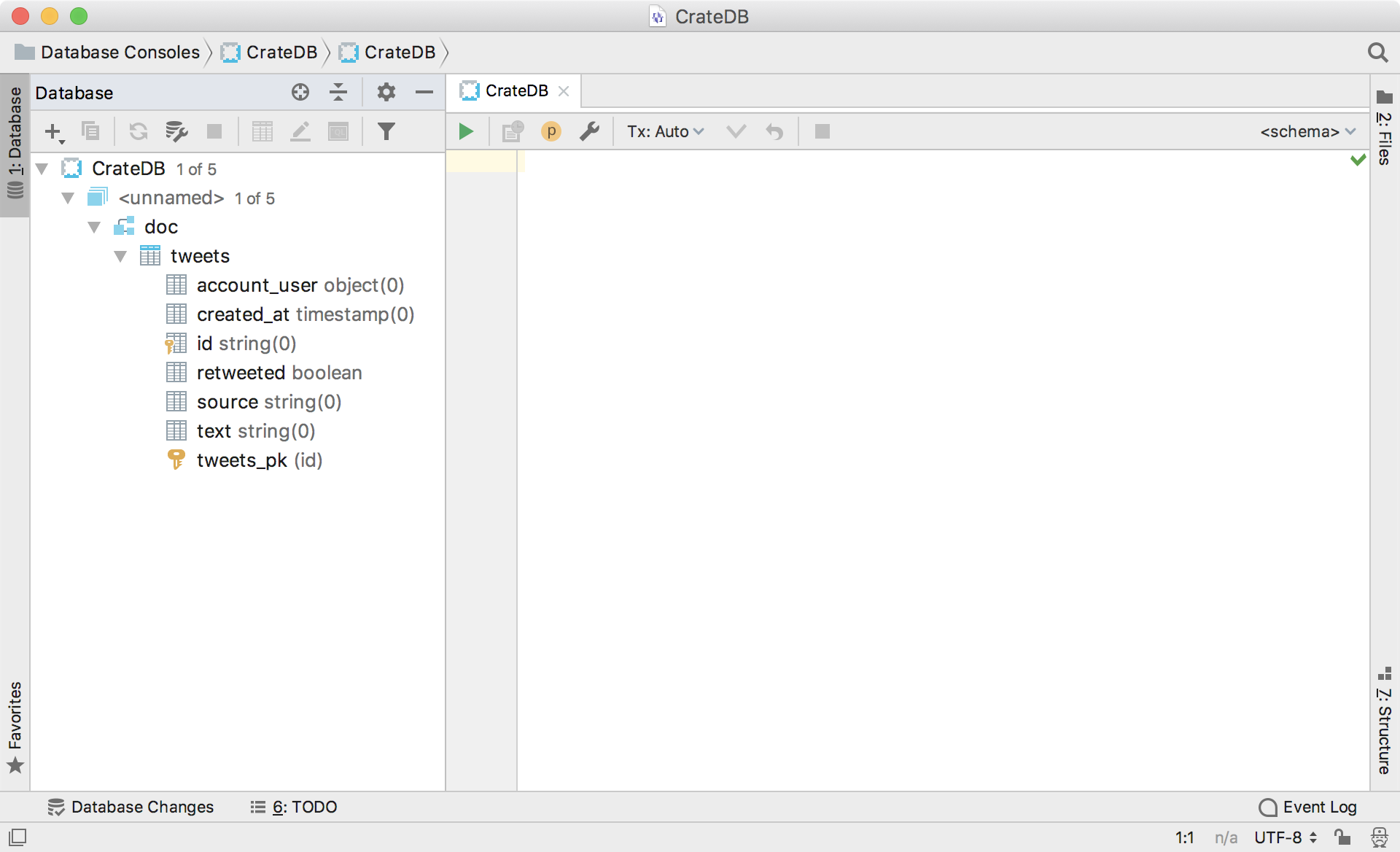
- #Datagrip connect to database by pem key how to
- #Datagrip connect to database by pem key driver
- #Datagrip connect to database by pem key password
If host names are specified in the list they can have DNS entries with multiple IP addresses. Instead of an IP range you can define a comma-separated list of host:port pairs.
#Datagrip connect to database by pem key driver
If the connection fails, the driver will continue to try all other possible addresses. When opening a connection, the driver will randomly choose an address from the specified address range. Sets ANSIARGENCODING, ANSIDATAENCODING, UNICODEARGENCODING, and UNICODEDATAENCODING to the given value. Valid values for this option are "1" (UTF-16) or "2" (UTF-8). If the client uses the DataDirect driver manager, this parameter specifies the type of Unicode to be used in W-functions. Here are some examples:ĭefault size for VARCHAR parameters in prepared statements whose type Sets LC_NUMERIC to the given value during the connection. You can also set an encoding, for example, en_US.UTF. Sets LC_CTYPE to the given value during the connection. If you want to use the Exasol ODBC driver in combination with Cognos,
#Datagrip connect to database by pem key password
If the value for the parameter is refreshtoken, the connection string will be "EXAHOST=: AUTHMETHOD=accesstoken EXAPWD=" and the password will be your OpenID Refresh Token.įor more information, see Authentication using OpenID.Īutocommit mode of the connection. If the value for the parameter is accesstoken, the connection string will be "EXAHOST=: AUTHMETHOD=accesstoken EXAPWD=" and the password will be your OpenID Access Token. Specifies the authentication method for OpenID connections.

This data can be, for example, the data of prepared parameter values. Sets the encoding of ANSI string (SQL_C_CHAR) data to the given value. Sets the encoding of the arguments of ANSI functions to the given value. KeysĪll search patterns in the catalog function can contain ODBC search patterns. The supported keys are described in the following table. Note that you must have uploaded the corresponding SSH Public Key on the server user above.DSN=exa_test UID=sys PWD=exasol EXASCHEMA=MY_SCHEMAĭRIVER= EXAHOST=192.168.6.11.14/72975B4D331DEEB44FA41FB858A5417E163151BBFB45376574706800A8DCCE30:8563 UID=sys PWD=exasol Private key file: Local path to the file that contains your SSH Private Key.Proxy user: The name of your server user (usually you don’t want to connect as a privileged user like moss) – you can get this from Moss: Server → Server Users.Proxy host: Your server’s public IP address – you can get this from Moss: Server → Overview.

In case you want to use SSH public key auth:

Password: Password of your database user – you can get this from Moss: Server → Databases.

User: Your database user – you can get this from Moss: Server → Databases.Make sure your Driver is MySQL and provide the following inputs: You’ll have to set it up through three different tabs. Once you have it installed, create a new Data Source for your MySQL database. The approach is quite similar regardless the particular client, but in this article we’ll use JetBrain’s DataGrip. You may want to manage your remote databases from your local computer using a SQL client.
#Datagrip connect to database by pem key how to
How to securely connect to your remote database using DataGrip


 0 kommentar(er)
0 kommentar(er)
